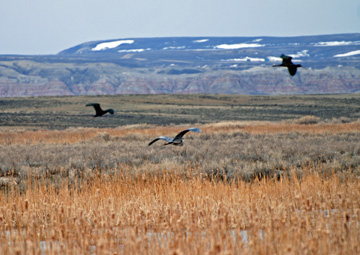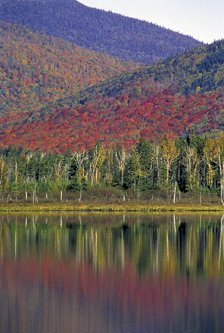Deductions on Conservation Easements
By: Amos S. Eno
Posted on:08/21/2012 Updated:08/23/2012History and Insights from a Leading Authority
As a tax attorney in the office of Chief Counsel to the IRS in Washington, DC from 1978 to 1982, Steve Small wrote the original federal tax regulations for deductions on donated conservation easements. This made him, almost instantly, “the leading authority on something no one else was interested in,” as he puts it.
From there Steve has gone  on to establish his own private legal practice focused on assisting landowners to understand and execute conservation easements. “I’m just a technician,” Steve says, “The landowner is the one making the gift, and I work for the landowner.”
on to establish his own private legal practice focused on assisting landowners to understand and execute conservation easements. “I’m just a technician,” Steve says, “The landowner is the one making the gift, and I work for the landowner.”
“Ninety percent of my clients are private landowners and 10% of the time I represent organizations like the Texas Agricultural Land Trust. It’s something that not a lot of people do, and It’s a wonderful field. I get to work with some of the most wonderful people in the country and see some of the most beautiful real estate.”
Steve’s experience gives him a sweeping perspective on conservation easements around the country. There have been a few large easement projects on west Texas ranches - “TALT and Texas have come a long way,” Steve says. A lot of northeastern states, some mid-Atlantic states, some southeastern states, and Colorado, Montana and Wyoming have had fairly active easement programs.
What Creates Easement Momentum in a Community
“What tends to create easement momentum in an area where it didn’t exist before,” Steve explains, “is when people who are well-respected, long-time members of their communities convey an easement. This makes other community members say to themselves, ‘hey he’s not a communist, maybe I should look into that too!’”
should look into that too!’”
According to Steve, one of the greatest difficulties - and a significant part of the rationale behind the Private Landowner Network family of web portals and databases - is that there is not any particular “information loop” that includes all landowners. It’s exceedingly difficult to identify and contact landowners in so many varied places around the country. But the reality is that many landowners still do not want to see their property subdivided and paved over.
In the 90s, a lot of ranches were sold to pay for estate taxes or for development. The Colorado Cattlemen’s Association led the West in recognizing the importance of keeping ranches unfragmented to preserve their way of life. They began thinking more seriously about conservation easements, and eventually formed the Colorado Cattlemen’s Agricultural Land Trust.
It takes time to build momentum, and Texas was behind a good bit of the rest of the country until the Texas Cattle Ranchers Association founded TALT. Steve credits TALT for changing the attitude of landowners who did not believe in easements. Now a number of state ranching gro ups promote easements. Initially, these organizations didn’t want to deal with groups like The Nature Conservancy, rightly or wrongly, simply because it felt as if “they don’t share our thinking.”
ups promote easements. Initially, these organizations didn’t want to deal with groups like The Nature Conservancy, rightly or wrongly, simply because it felt as if “they don’t share our thinking.”
Landowners don’t like to be told what to do with their property. Forest, agriculture, plantation, ranch, and duck or deer club owners may have very little in common beyond the fact that they are quite an independent lot. But Steve’s experience is that to many, the conservation easement idea is new, different and downright strange, which makes people stay away despite the significant growth in private land conservation networks around the country.
The size of easements varies widely depending on land ownership patterns. In Texas or Colorado, a 20,000-acre easement is not that uncommon. However, in the urban northeast, 20-acre parcels are considered big. Many dedicated land trusts with different types of constituents are still unable to reach everyone in their service area. “It’s a constant effort to reach out and educate,” says Steve. “Over the years it’s gotten better. For example, the easement business in Vermont is booming, but there is a long history of government support in Vermont for easements, and that’s unusual.
Easement Tax Deductions Achieved Gains in Acreage Under Easement
According to Steve, increased tax deductions provided incentives for working farmers and ranchers to execute conservation easements from 2006 to 2011. “Absolutely, the stats show it led to a significant increase in easements in many parts of the country.”
The bad news, however is that those deductions expired in 2011, along with a lot of other tax provisions. Organizations like the Land Trust Alliance are still attempting to extend those deductions and even make them retroactive to the beginning of the 2011. “But nobody who reads the paper would count on Congress getting anything done this year. Many land trusts are as busy now as when the incentives were in place, partially because so many landowners are older and starting to think about estate taxes. Since a donated easement lowers the value of a property, it can reduce or eliminate both federal and state estate taxes.”
Come back to hear more from Steve about the current state of estate law and consider how the current tax and budget debate may affect landowners.
 Sign In
Sign In
 Sign In
Sign In
